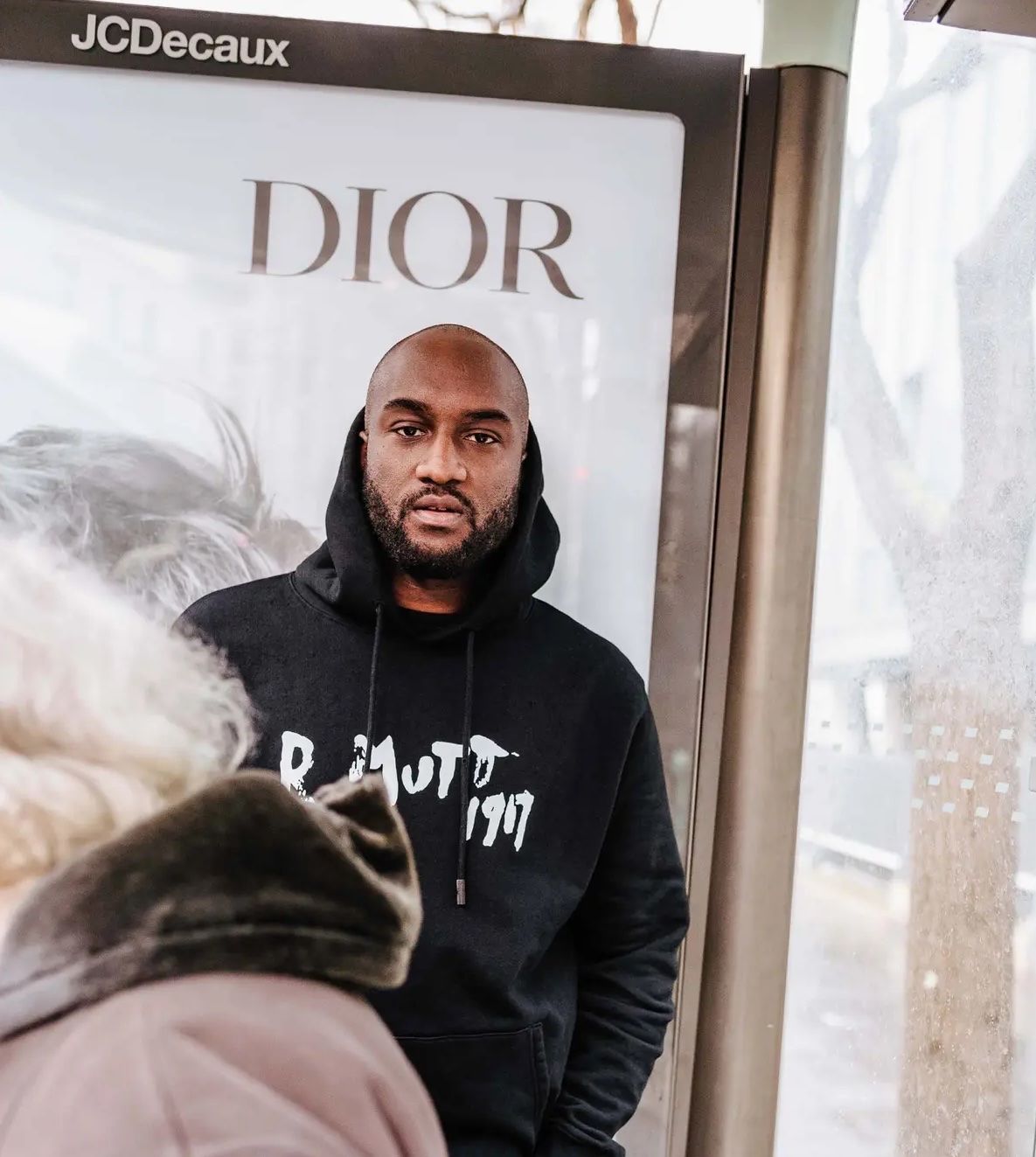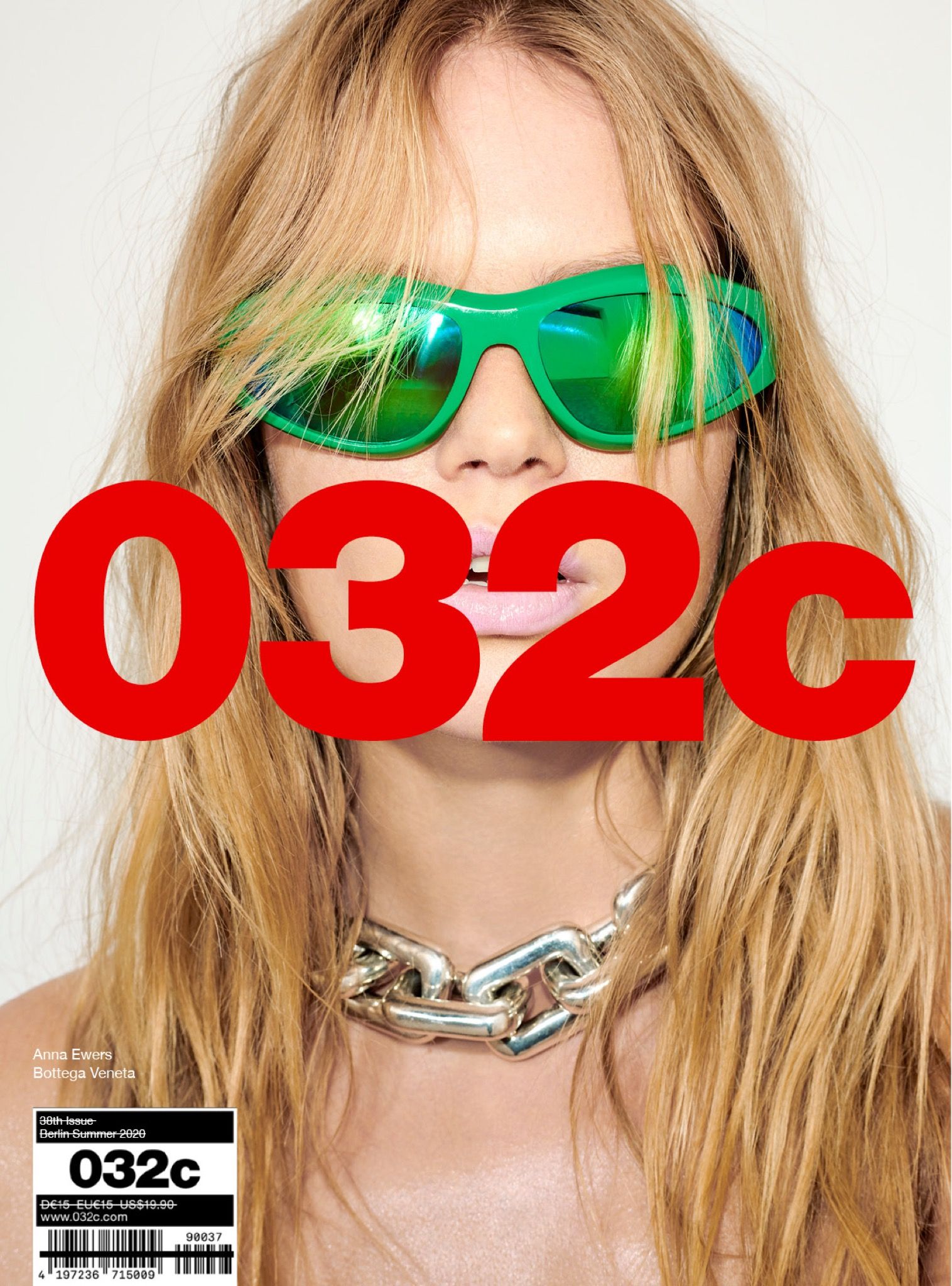“Fashion Theater”: BRUNO SIALELLI at the House of LANVIN
|Victoria Camblin
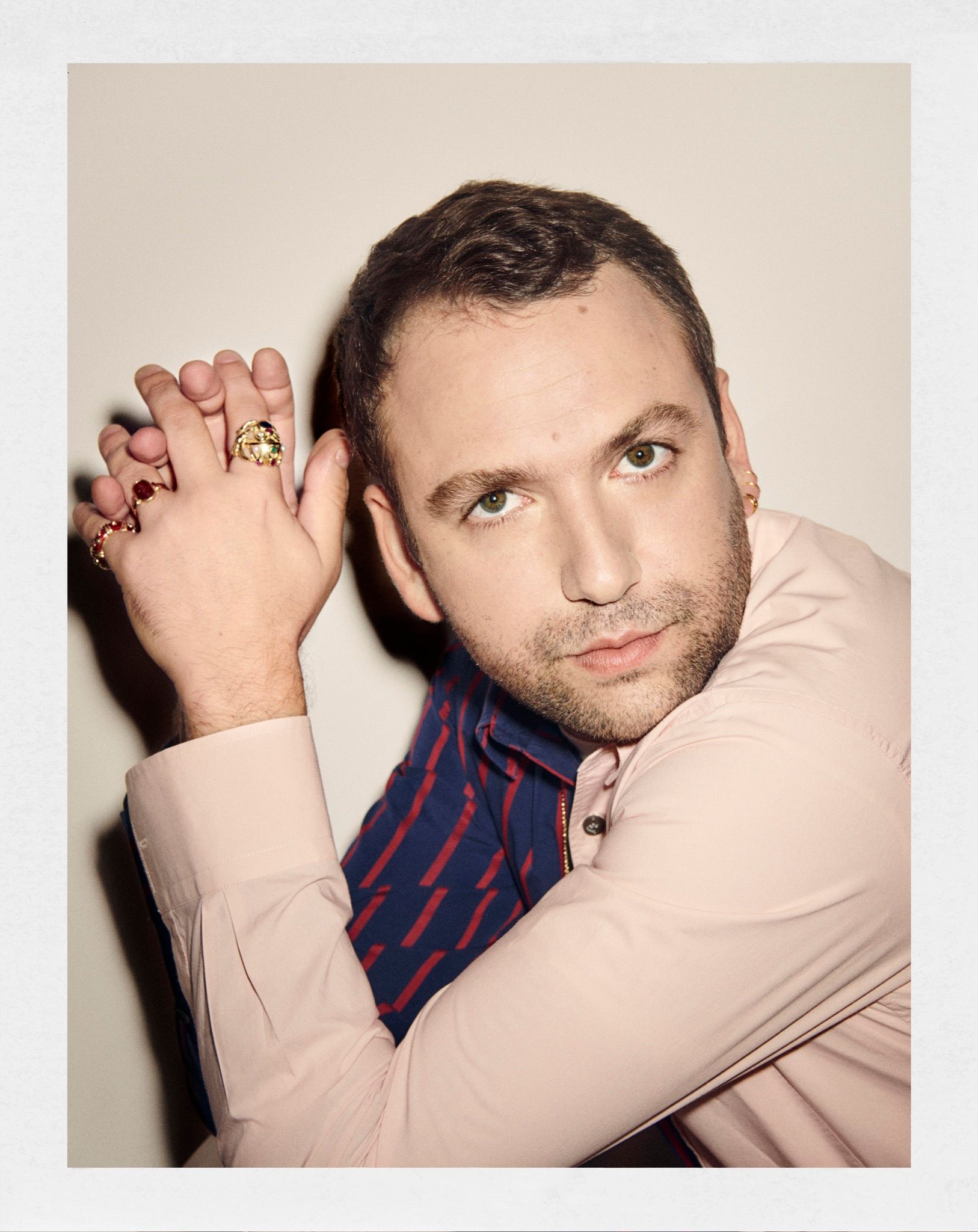
Is a new guard of young creative directors not from Paris or Milan ushering in a radical new era for Europe’s heritage labels? At Lanvin, BRUNO SIALELLI sees beyond the generational narrative.
Jeanne Lanvin was 18 years old and fresh off an apprenticeship when she opened her first boutique – a hat shop in Paris’ 8th arrondissement – in 1889. Success came quickly to the young and unknown designer: the dresses she created for her daughter became wildly popular with Parisian moms, who soon recruited their networks as clients. Lanvin emerged as a couturière and businesswoman. The Maison de Lanvin surged in growth, popularity, and impact between the two wars, when its founder tapped top designers in other fields to expand her empire into beauty and home furnishings, launching sportswear and men’s lines while shaping Paris’ haute couture silhouette – and with it, international fashion.
Lanvin found inspiration and a platform on her travels, representing French design on trips to New York and, on more than one occasion, to international showcases in booming interwar San Francisco. This trajectory may or may not be part of what attracted LANVIN creative director BRUNO SIALELLI to California earlier this year. Appointed in 2019 after serving as menswear lead at Jonathan Anderson’s Loewe – via design roles at Balenciaga (under Nicholas Ghesquiere and Alexander Wang), Acne, and Paco Rabanne – Sialelli, then 31, was also “young and unknown” when he joined the 130-year-old house. His research trip to the Golden State took place a year later, immediately after the label’s Fall/Winter 2020/2021 Ready-to-Wear presentation back in February. “It was the last one of the ‘before’,” Sialelli said of the Paris Fashion Week that prefaced Europe’s first lockdown. “Right after the show, I got the chance to escape.” He and his team flew into San Francisco – for work, and some play – then rented a Mustang and drove down the coast to continue their cultural investigation in Los Angeles, staying in a scenic Highway 1 motel along the way. “It was very exciting, very filmic,” said he designer, who landed back in Paris just in time for the city’s first lockdown.
Sialelli’s most recent collection was also about “the journey,” broadly defined – through space and through time, through personal memory and through shared history. Presented at the historic Yu Gardens in Shanghai last month, the Spring 2021 Ready-to-Wear show allowed Lanvin to fast-forward, in a sense, to a moment without Covid-19. (Fosun International, Lanvin’s parent company since 2018, is headquartered in Shanghai, and China is closer to “normalcy” than much of the world – open for events, and for business.) The design process, meanwhile, took Sialelli back to the 1920s, when the house was expanding in ways that he believes shed light on both passing trends and hard questions circulating within the industry today, a century later. His work with Lanvin’s legacy has also taken the creative director back to his own cultural upbringing in Marseille, where as a teenager he interned in the Christian LaCroix-directed wardrobe department at the Opéra Municipal – an Art Deco temple built in 1924 – and began to nurture his (possibly genetic) affinity for theater. A notorious fan of the stage herself, Jeanne Lanvin is one of many characters, and her label’s hometown one of many backdrops, that Sialelli plans to put center stage.
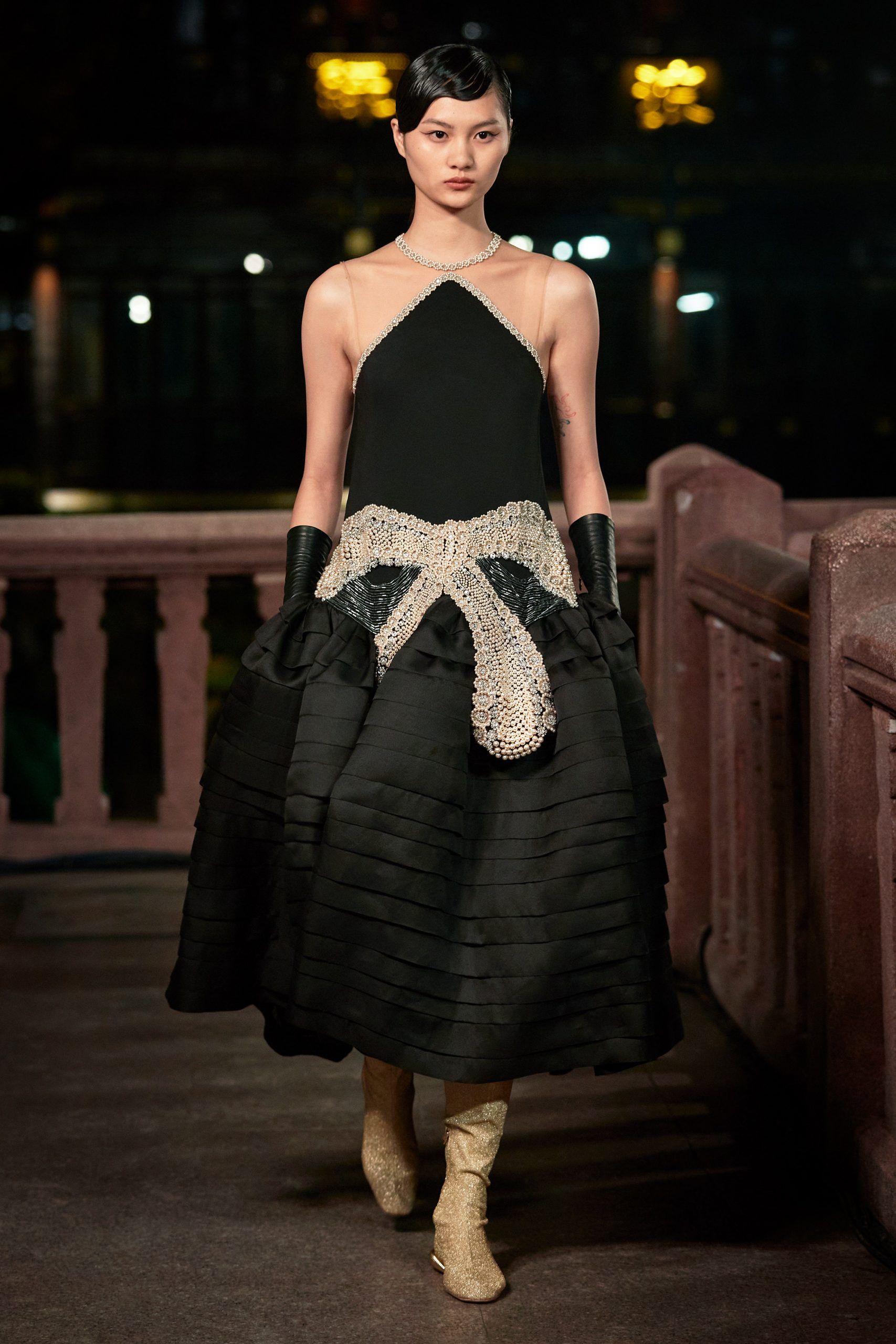
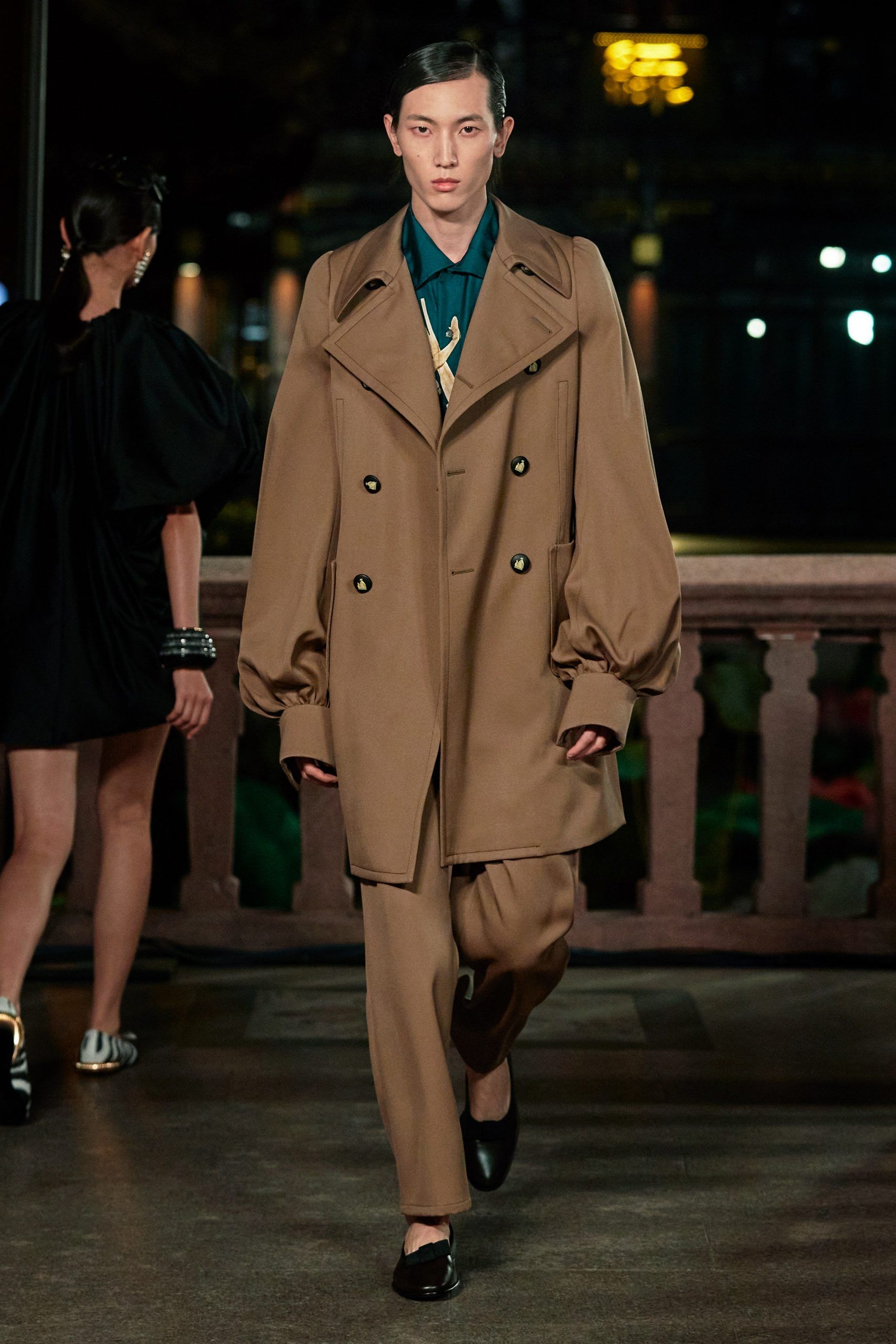
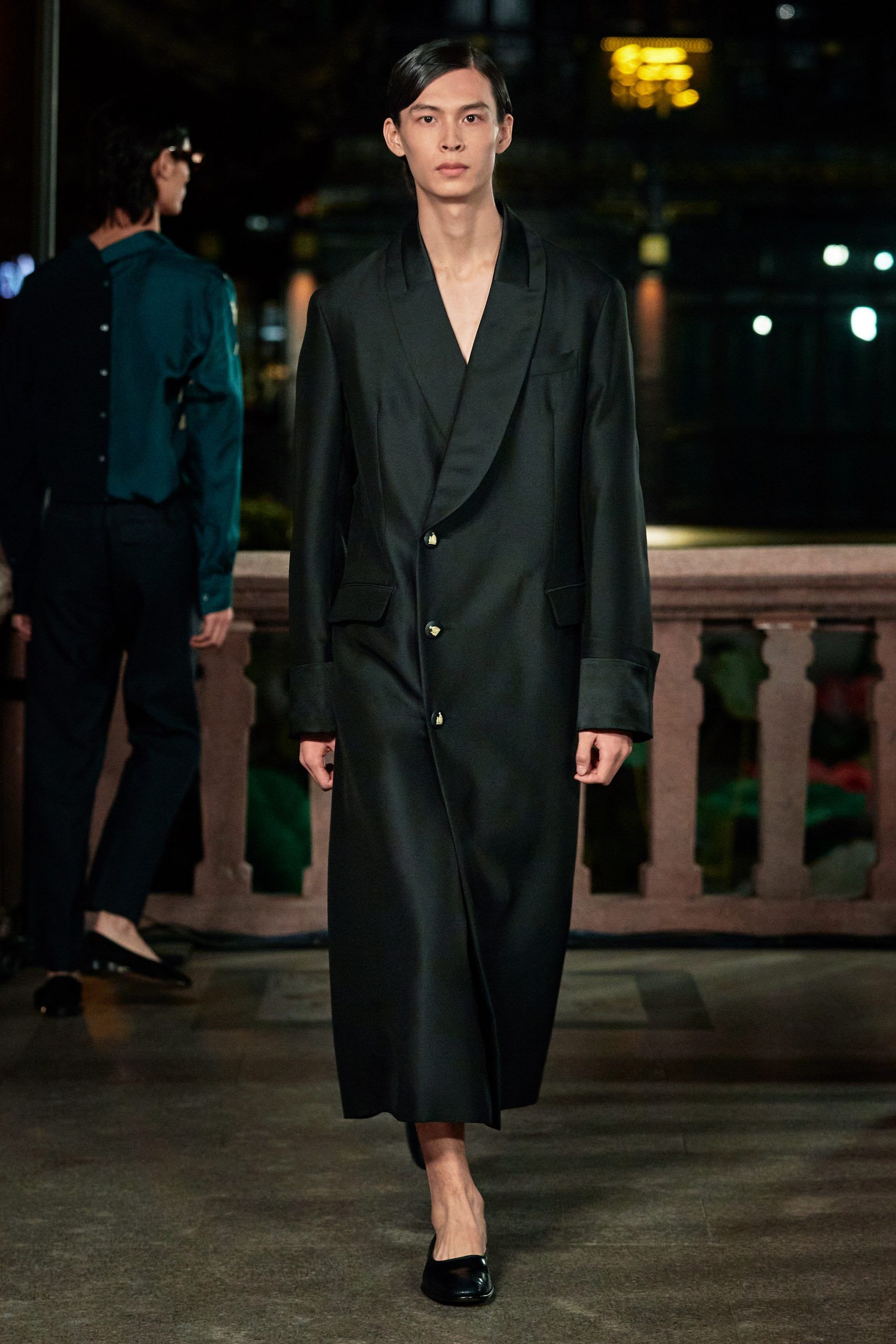
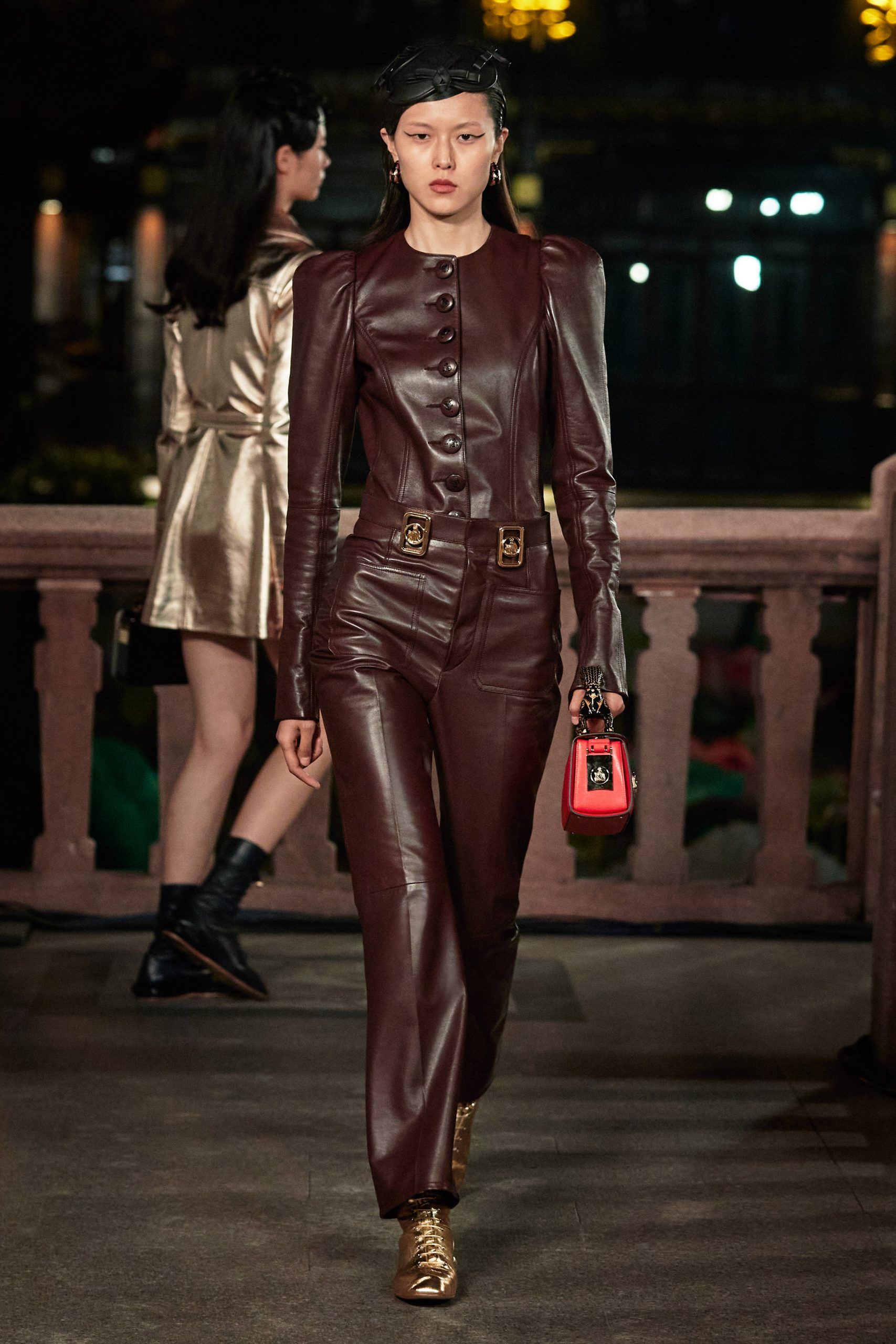
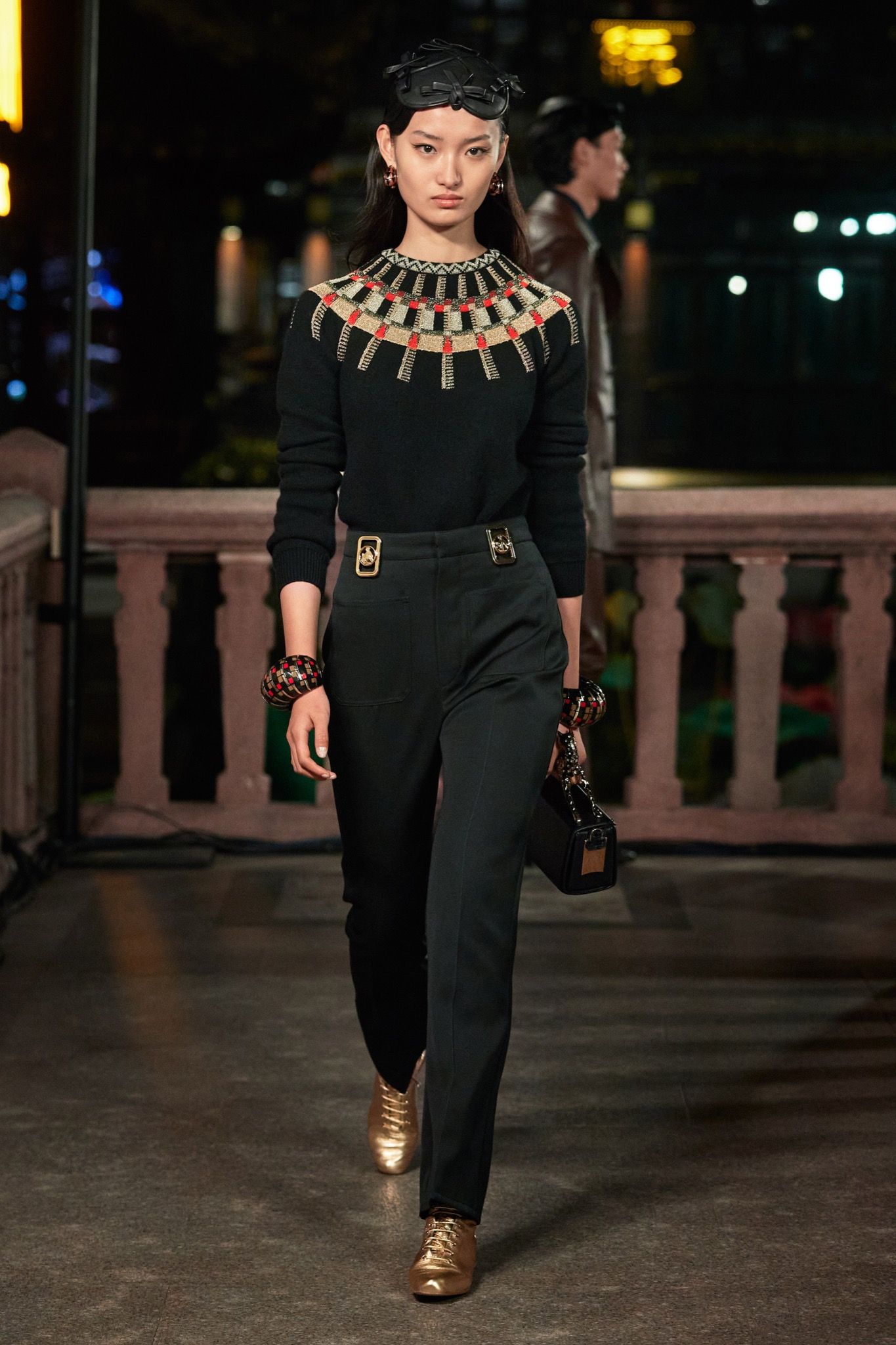
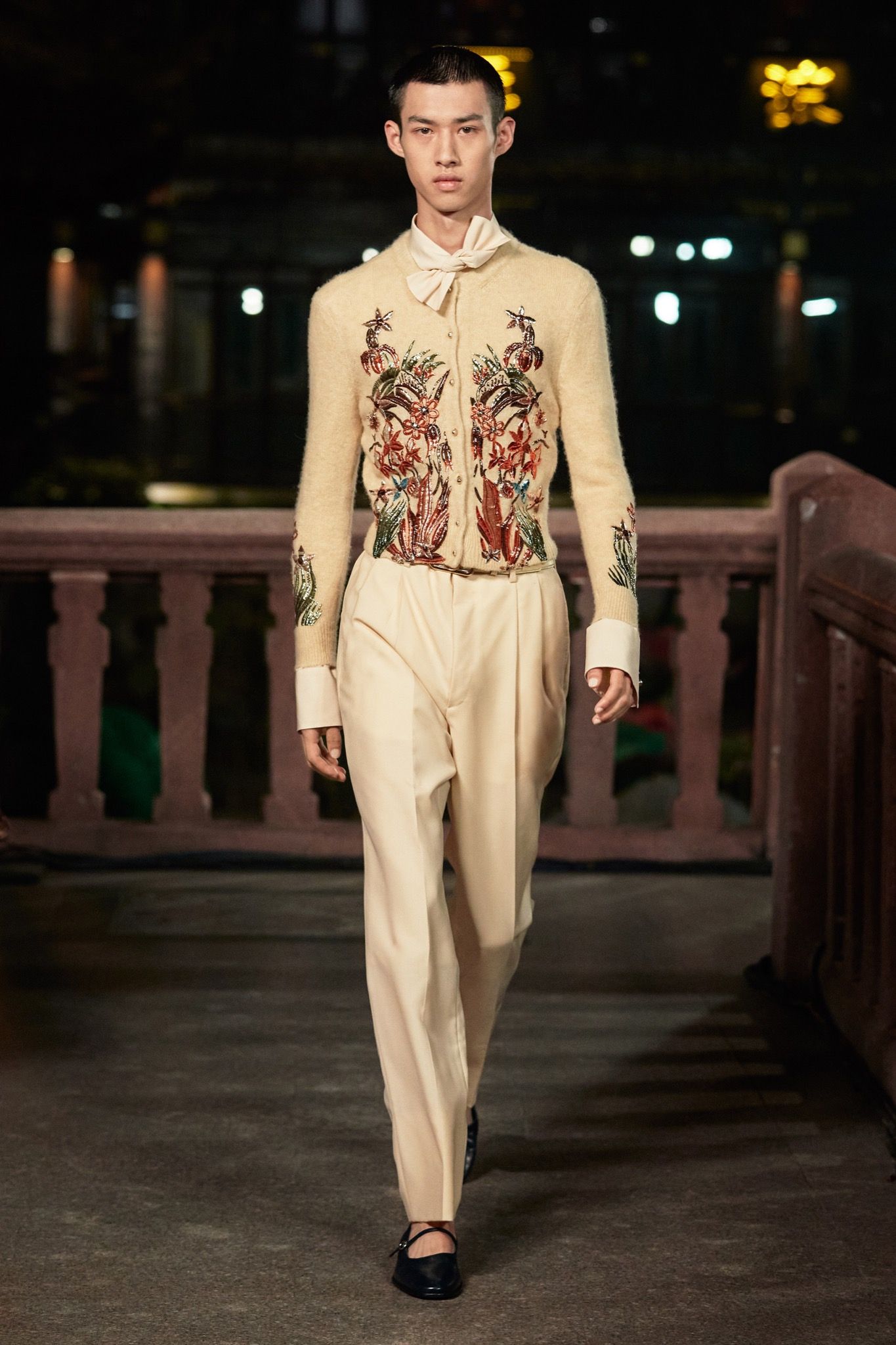
Victoria Camblin: Does your interest in California relate at all to the fact you are from Marseille? There is something in the atmosphere and culture of port cities and coastal areas – an openness, maybe – that Paris for example doesn’t have.
Bruno Sialelli: It’s funny, people in Marseille are obsessed with LA. I never dreamed of living in California, but there is probably a shared “endless summer” vibe to these cities. They are utopic in that sense. And it’s not just about a beach lifestyle – in Marseille there is also a roughness, there is poverty, just like in LA, and you really only see the difficult parts if you were raised there. When you live in Marseille and you’re from a big family with no money, you can basically make a sandwich and go to the beach and you’re on holiday sharing amazing moments. In Paris, with the way the city is structured, it’s more challenging to do that. Think about French rap: there was always a fight between the iconic rap group in Paris and the iconic rap group in Marseille. In a way, the lyrics and sounds are softer and more positive in the group from Marseille, even if they are also expressing the difficulty of life. There is something more poetic and optimistic to it, which I think translates how it is to be there.
You’re talking about the NTM / IAM battle back in the 1990s.
I was totally obsessed with IAM. I’ve been to so many concerts. Even my parents are fans – they know all the songs by heart too. We had the cassettes in the car back in the day and on long drives it was IAM on the tape deck all the way, sometimes for five or six hours. In Paris, the band was NTM, which stands for “Nique Ta Mère” – I think even the name of the groups expressed where they were coming from and their message in a way.
I love this regional take on French rap. I wonder if the same thesis would hold up with the East Coast / West Coast dynamic we had in the US – or in French fashion, in terms of the attitude conveyed by different designers or brands based on where they are from. Is that Marseille energy coming into Lanvin, breaking away from the centrality of Paris?
Even though Lanvin is super Parisian, the house has always talked about French lifestyle in general. In Marseille, I grew up in this Le Corbusier housing development called Cité Radieuse – it is really a privilege to be from there, though back in the day it wasn’t fancy, in fact nobody wanted to live there. It was my father who decided we should move in when my mom was pregnant with me, actually, in the 1980s. They saw a convenience in being part of this sort of left-wing, even radical idea of community lifestyle. I went to preschool on the eighth floor and as a kid did Karate and Judo in the gymnasium on site. So I’m a proper Corbusier baby. It really affected my perception, not just in terms of architecture and decoration but also in terms of social values. There was a theater on the third floor, and every week there were movie nights where the kids and the adults would all watch French New Wave films together. It was a very cultural place, and in Marseille that was quite precious, I think, because the city is not at the level of Paris in terms of museums and “culture.” I think those circumstances pushed me to look outward even more, from very early on. As a teenager I started to notice that Marseille might not be able to provide me with enough ways to express myself, my creativity, even my sexuality, because it’s a small town in some ways. So I decided I wanted to go to Paris – it’s kind of cliché!

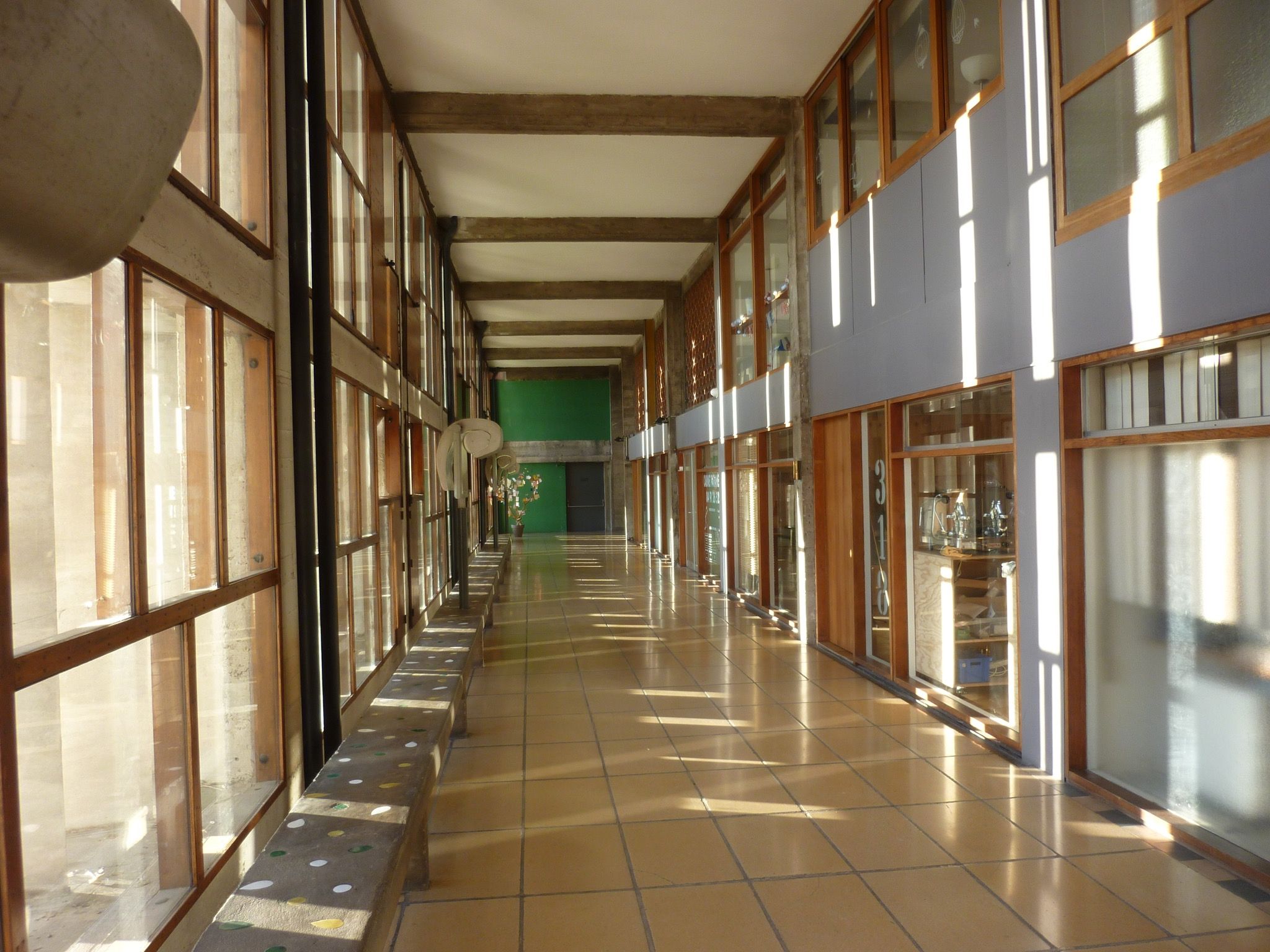
What did your parents think?
Well this came partly through my mom. On my mother’s side they were seven children, born in Tunisia, to a Jewish-Tunisian family. Her little brother was Elie Kakou, a very famous French comedian who did a lot of parodies and Jewish North African humor, but connected as well to the North African community in general, Jewish or not. He had a wide range of characters – he did a parody of Dalida, for example – that were very iconic in France. My mother worked with him as sort of his right hand before he died in the late 1990s. He lived in Paris, was very close friends with Jean Paul Gaultier, and had an extravagant character and a very fashion mindset. In his stand-up he did a lot of parodies of fashion – he was really kind of a gay activist through the personas he created on stage. When I was a kid you could put me somewhere and I would open every cupboard and sneak around, and once he caught me snooping in his closet. It was full of amazing clothes – a lot of Versace, all the major brands of the 1990s. I was startled and all apologetic but he was like, “You like clothes? Pick anything you want.” And I picked out like 30 things – shirts, trousers, weird stuff from Moschino. As a comedian, my uncle had a lot of humor in the way he dressed. That was my education. That’s how I learned you can express yourself with your look, and how I understood that it was a field of expression that I was interested in. So I got an internship, in the costume department at the Opéra de Marseille, and that’s where I learned how to drape.
Do you feel you use humor in your work, or see fashion as something to have fun with?
Totally. With Lanvin, I see playfulness, more than humor, in the history of the house. Jeanne Lanvin started to do kids’ wear for her beloved daughter, and her dresses for little girls were quite eccentric. I don’t know if she was funny woman, but in the peculiarity of the colors and the embellishment, there is something very soft and playful and easy, and I think the brand has always been a platform for expressing that. Alber Elbaz also injected humor in his designs. I think about what we do as very character-oriented, so sometimes a character is serious and sometimes what is revealed is someone a bit eccentric, a bit fun. I see the collection as an ensemble cast, with the story building each season as it would in a novel or with each episode of a series.
Comedy, drama – it comes back to the theatrical, to the stage.
Yes – it’s “fashion theater,” in a way. It was interesting to discover that one of the things that excited Jeanne Lanvin most was to dress strong actresses for the theater. I see those common intuitions and common values in the way I work, too.
Maybe that theater mindset also connects to Lanvin’s activities early on as a lifestyle brand – theater is not just about costumes or gala outfits, it’s also about creating a mini-world that includes set and prop design, or rather one’s house and one’s family. That total ambition is also present in modernist utopia of the Cité Radieuse, which wanted to bring all types of culture and activity together under one roof.
There is a very strong architecture decorative code in Lanvin. She’s also kind of the first couturier who implemented a logo and really started to use it everywhere to tie the products together. She’s the first to do menswear, kidswear, sportswear, lingerie, perfume, cosmetics, and so on, all together. She also had the home decoration line, and this sense of an architectural environment and feeling of space carried through everything. It was a very global approach, and I think it’s important to refer to that way of thinking, even if we’re not going to do a furniture line tomorrow. Jeanne Lanvin also had a very collaborative mindset, I think – a big sense of community. When she was interested in doing something she didn’t know how to do herself, she would collaborate. This is really the way fashion exists now, and how as a heritage brand you contextualize yourself within the current times: by collaborating with peers. Today I see Lanvin as a house that does express the currents times, but in very different ways than other brands do. When I started at Balenciaga, the core values were innovation, anticipation. It was really about how you can be a psychic, how you can interpret the future. That’s not Lanvin, which is more about a flavor of life than a prediction for it.
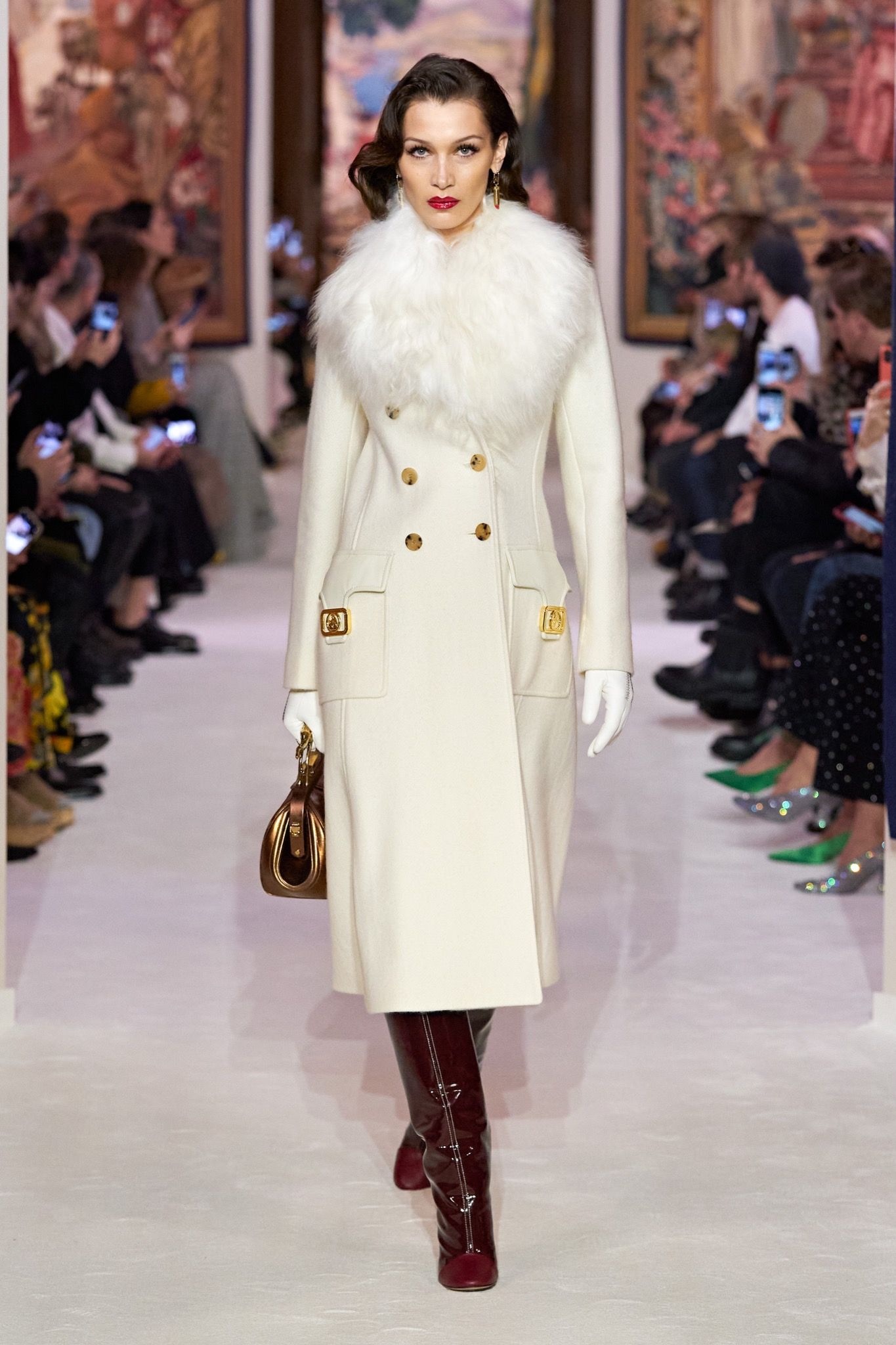
In terms of collaboration, I thought it was interesting that your fall 2020 collection was called “Conversation Piece” – taking something usually used to describe individual items that are conversation starters, and making it about a conversation between more than one person or product.
The idea with the last show was really to express how Lanvin, as a core code, was a house of collaboration. She collaborated with the furniture and interior designer Armand-Albert Rateau, with the illustrator Paul Iribe, and with many people we don’t know but whose contributions are very clear when you look in the archive. That’s also what makes the house a chameleon – in 130 years of existence, Lanvin has made constant comebacks and reinventions, and even within Lanvin’s 50 years at the helm of her house, in every era you could always say, “Lanvin is the new look.” This is interesting for me because it allows me to be fashionable, while at the same time true to the code of the brand, observing the full story. Lanvin is not like a highway, with palpable codes. It’s a journey that is less clearly defined than that.
As you noted about the role of collaboration in fashion now, it’s used a lot by heritage labels but it’s seldom in the DNA of the brand. Maybe that’s why it often feels a little bit …
Forced?
Yes. Or like a one off and not an ongoing conversation or a commitment to the format – a temporary solution to shake things up that is abandoned as soon as that one thing did its job. What you’re saying is that what’s interesting about Lanvin is that the brand didn’t just predict “the collab,” it actually embodied it.
In terms of anticipation, I think it’s that Lanvin is not about the close future – it’s about a longer view. But we’re also always in the business of rationalization. I’m happy to be able to highlight the strengths and values of the house that aren’t the obvious ones to our audience. If the house can be an intriguing place to investigate for an audience, that’s engagement – and engagement, to me, counts as much as selling in the sense of long-term vision. If we talk about Chanel – and it’s nice to take this example, because the labels were part of the same milieu – they have a comparable patrimonial past, in a way, without making the same clothes. Before Karl Lagerfeld, we don’t even know if the house was as clear as it is now. It is about building a legend, and they built theirs over decades. It’s important for me to give a space to Jeanne Lanvin, to give her the space for being the prophet, the legend. I can merge with that, but if or when I leave for one reason or another, if the house is building that, it will last.
In terms of historicizing, do you personally feel like you’re part of a particular generation? You know how journalists write about these things: they say, “this young designer went to this old heritage house.” “Bruno went to Lanvin.” I’m curious if you identify as being part of a certain new guard or peer group.
Well one question I do get a lot is “what is it like to be so young and to deal with the pressure of being part of this kind of cycle?” Ten years ago it was more about a star designer going to a big house and changing it than it was about bringing someone younger in, but it’s still kind of a musical chairs of designers. It’s on a cycle: sometimes owners of houses feeling like giving the reign to a new, unknown designer, and sometimes they feel like giving a reins to the star. I’m really happy to be part of that moment where platforms are given to creatives who are not so famous. I’m happy to incarnate the house, and I’m happy to take that public role and to step into the spotlight because I will have to, but I’m not taking it as if the brand can’t exist without me. I am in service to the brand, and will be one episode among many more to come.
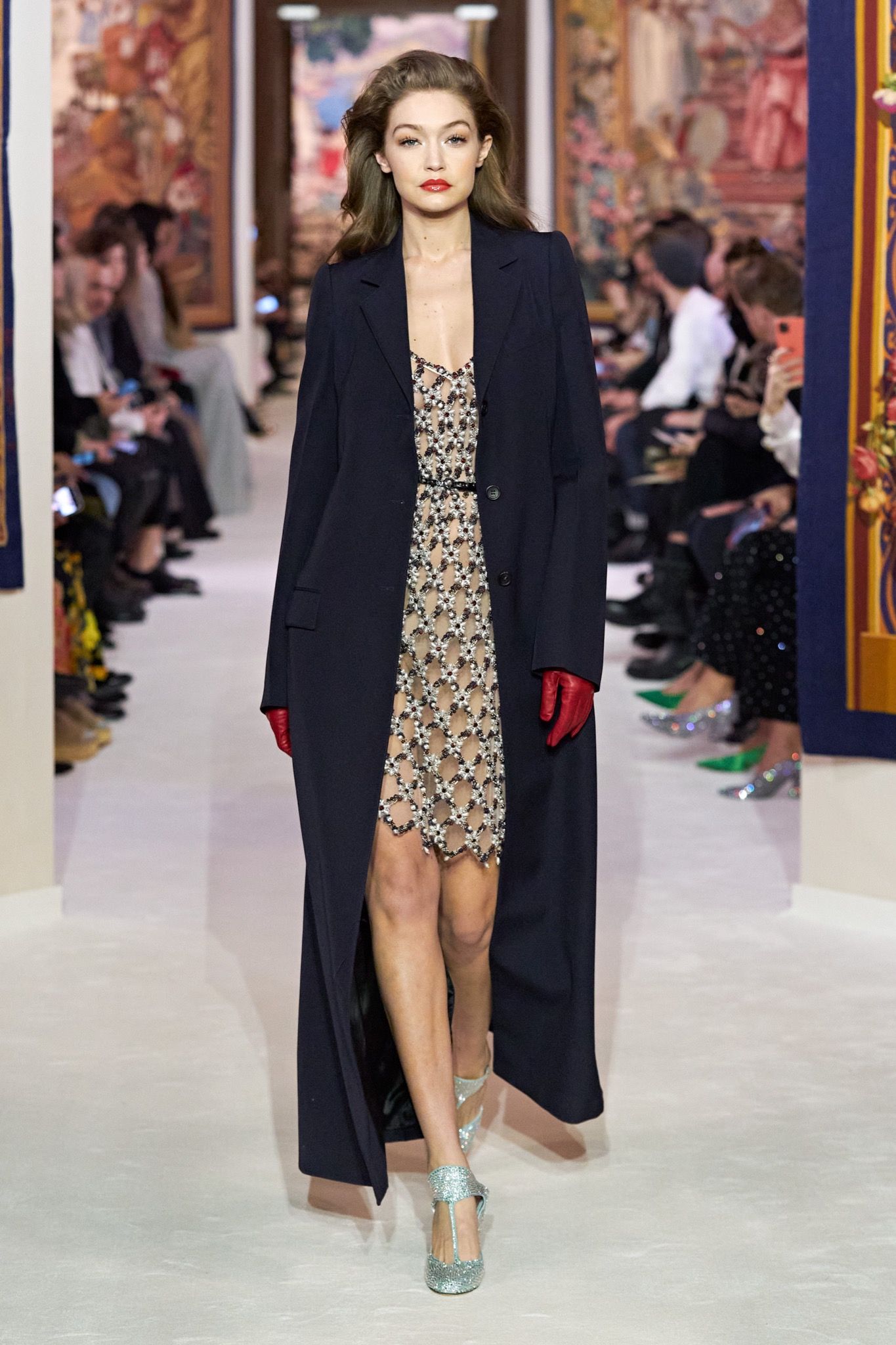
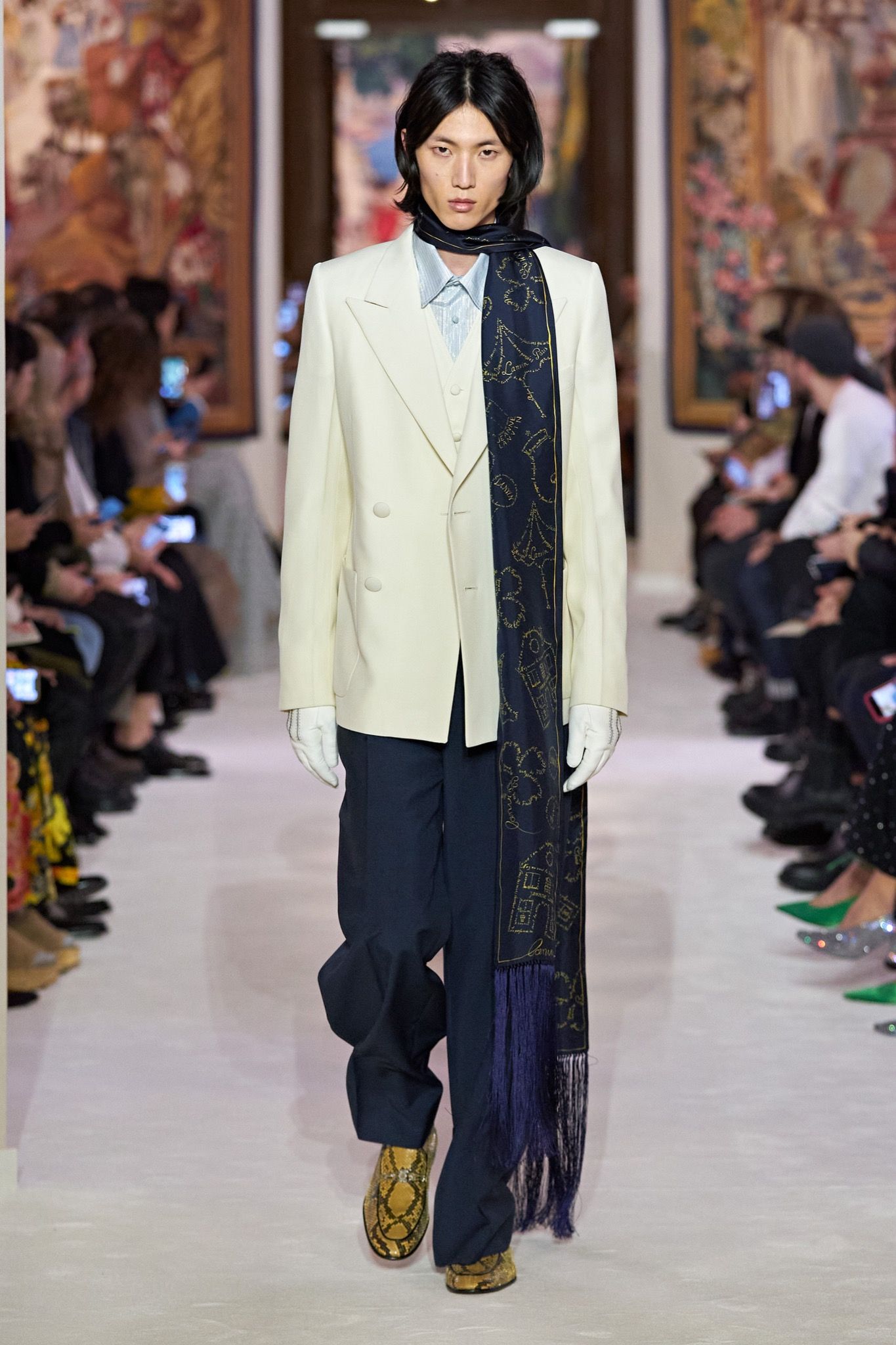
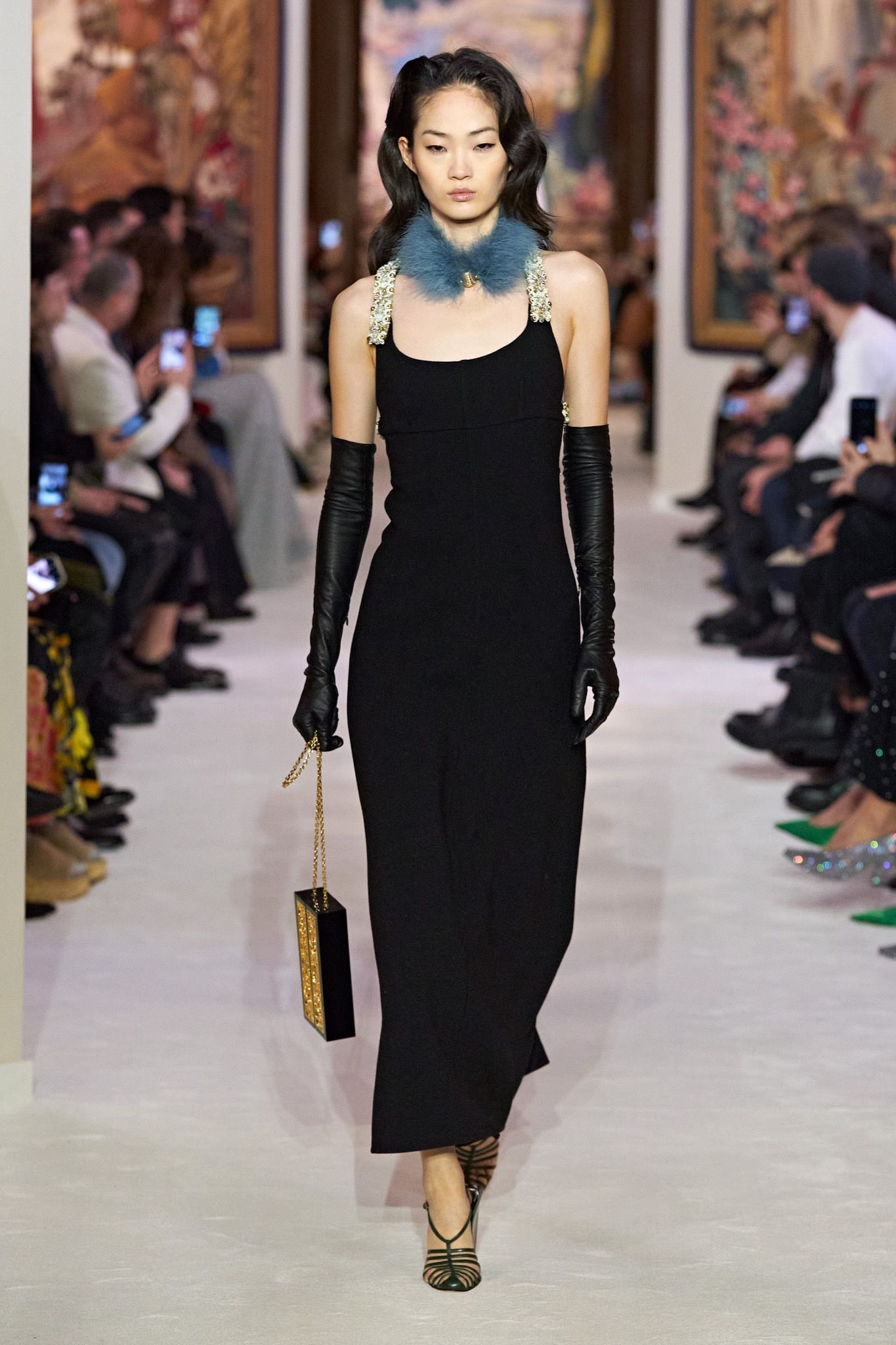
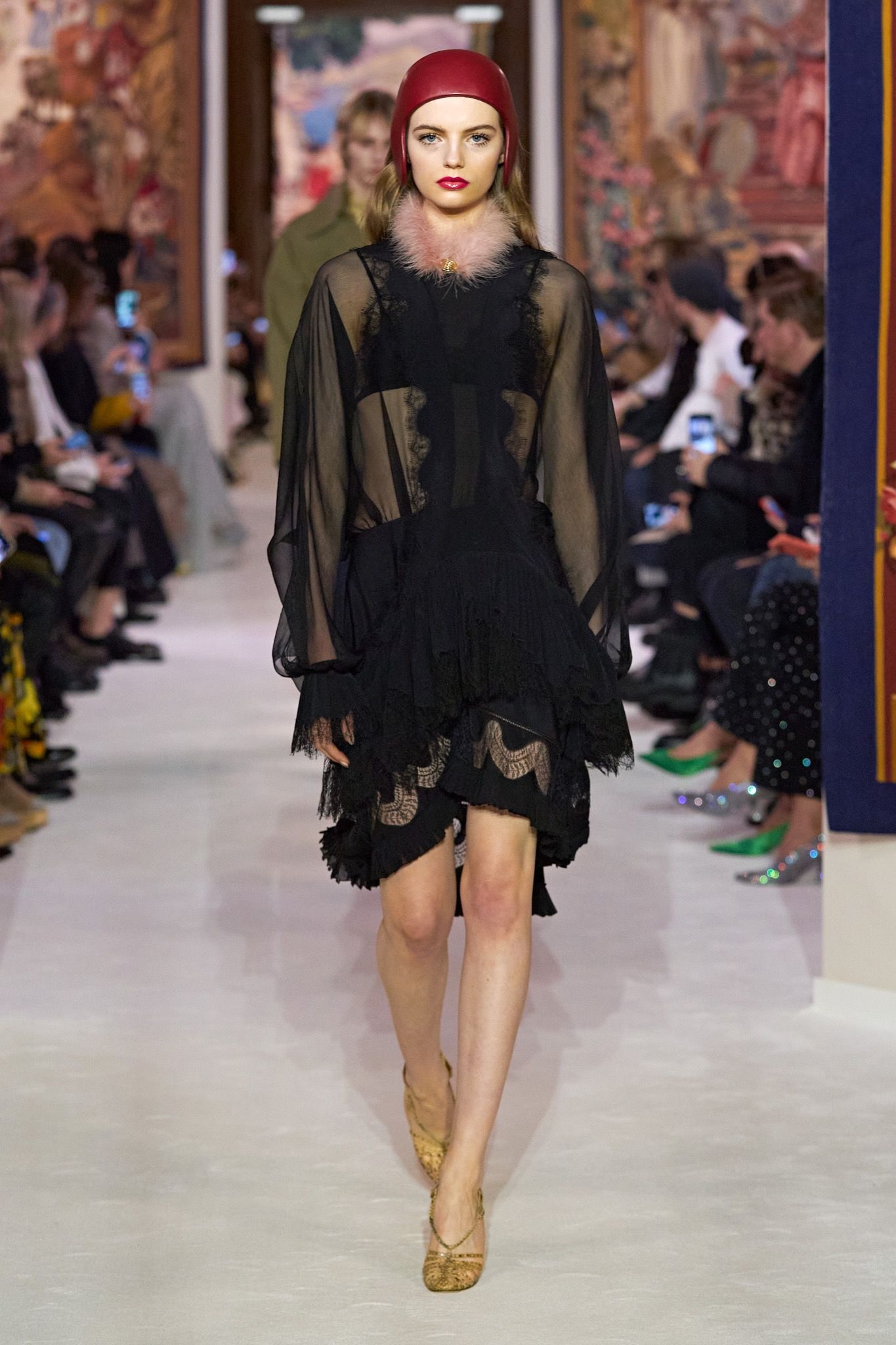
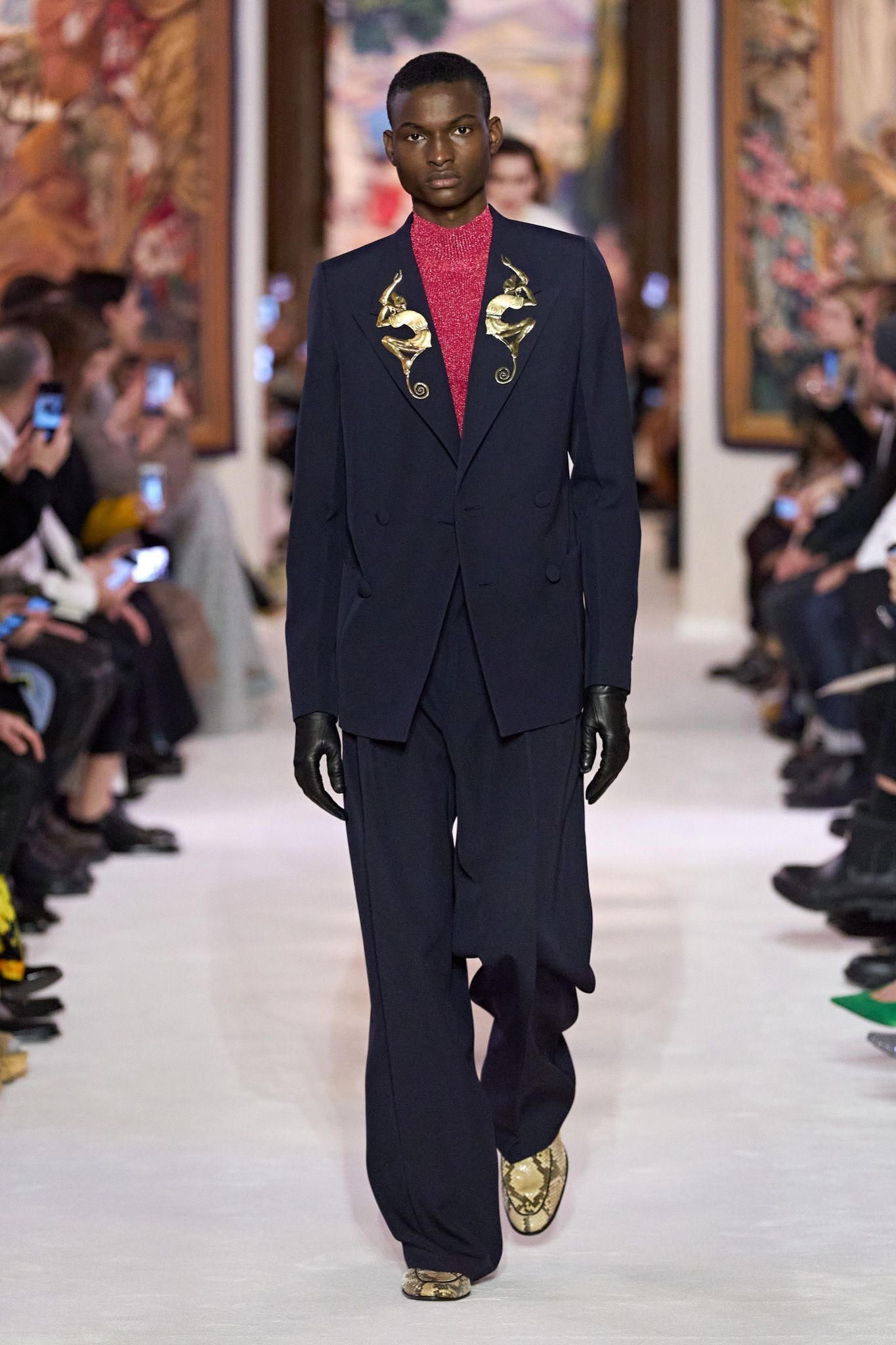
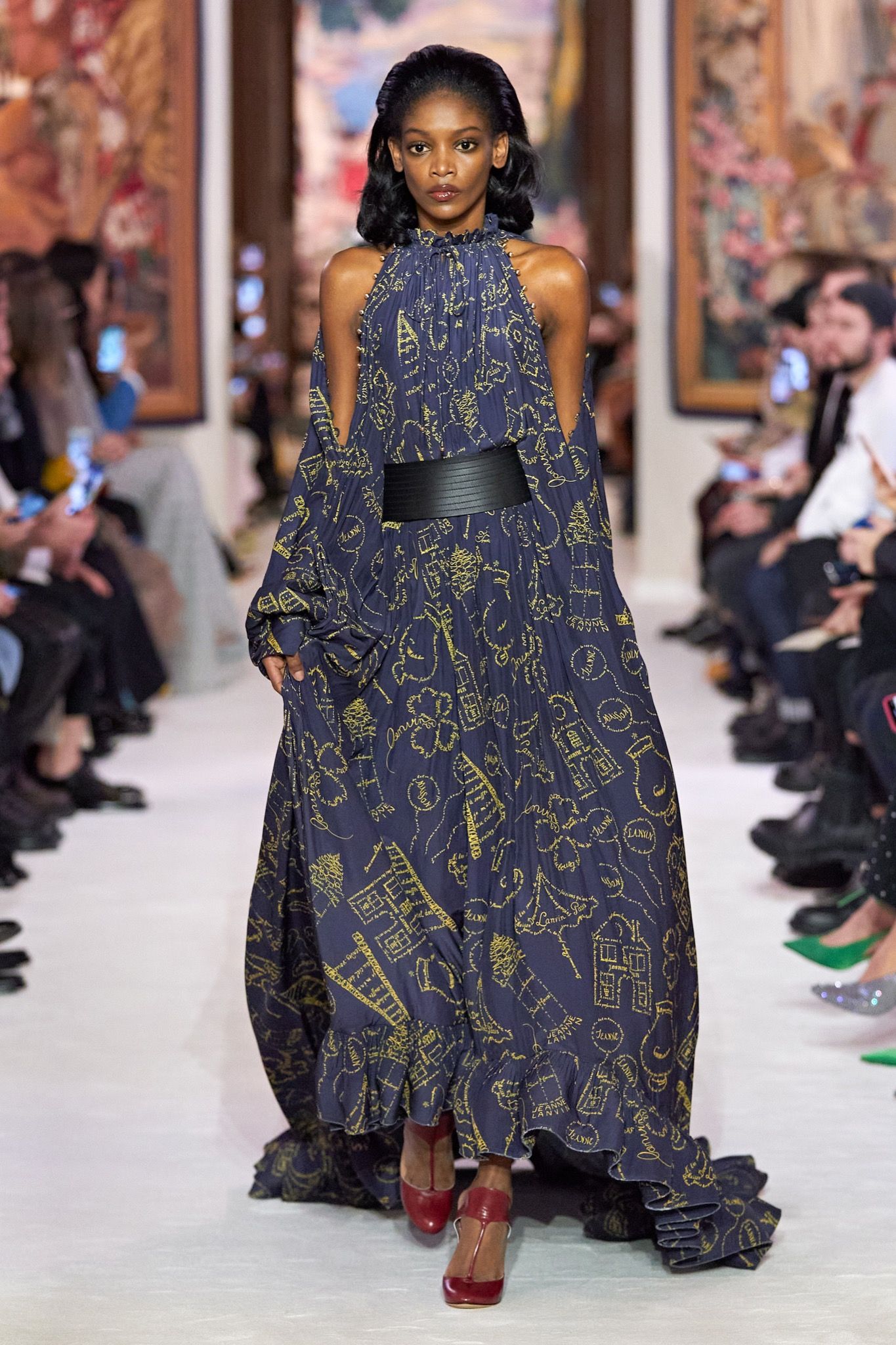
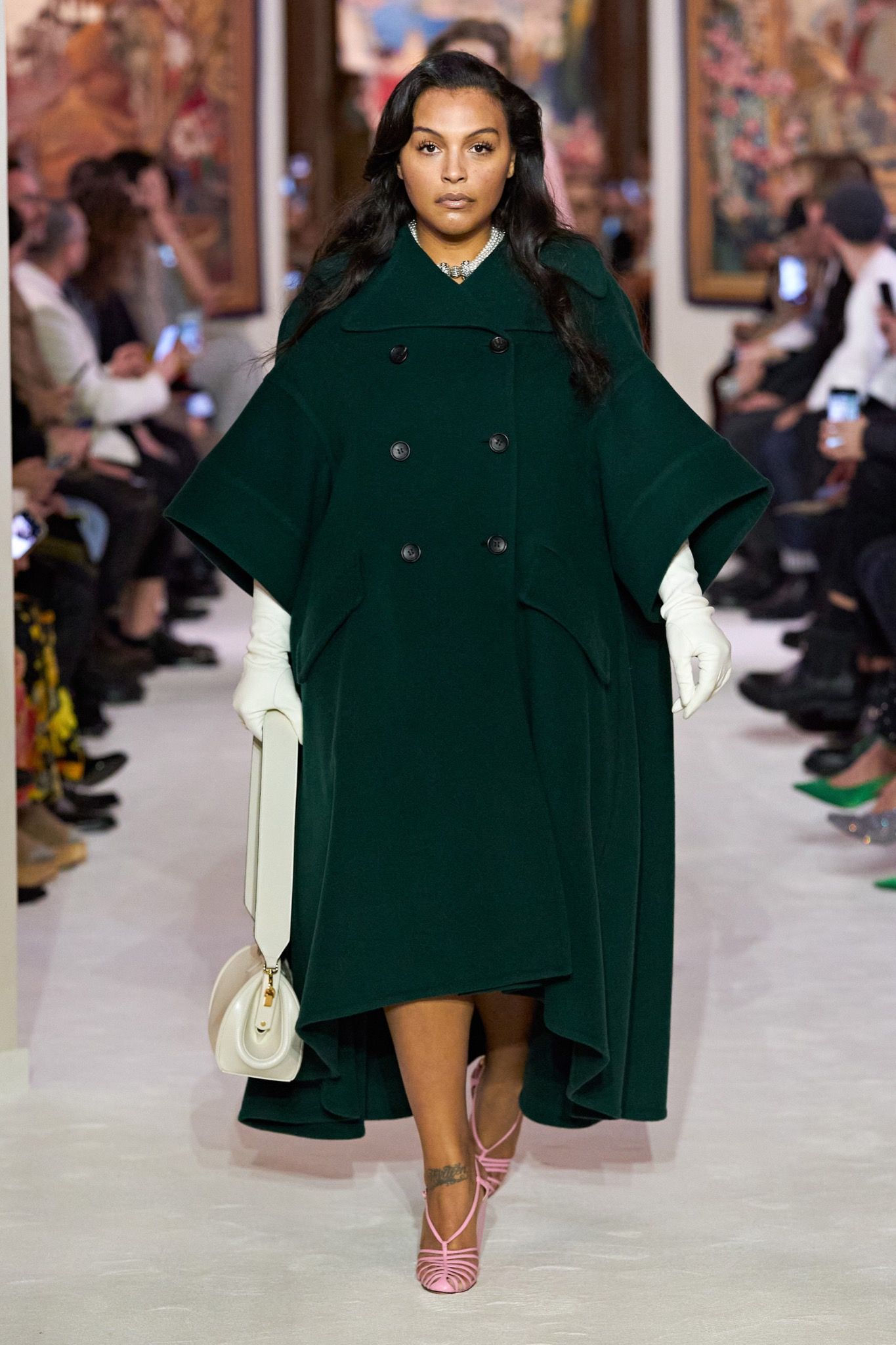
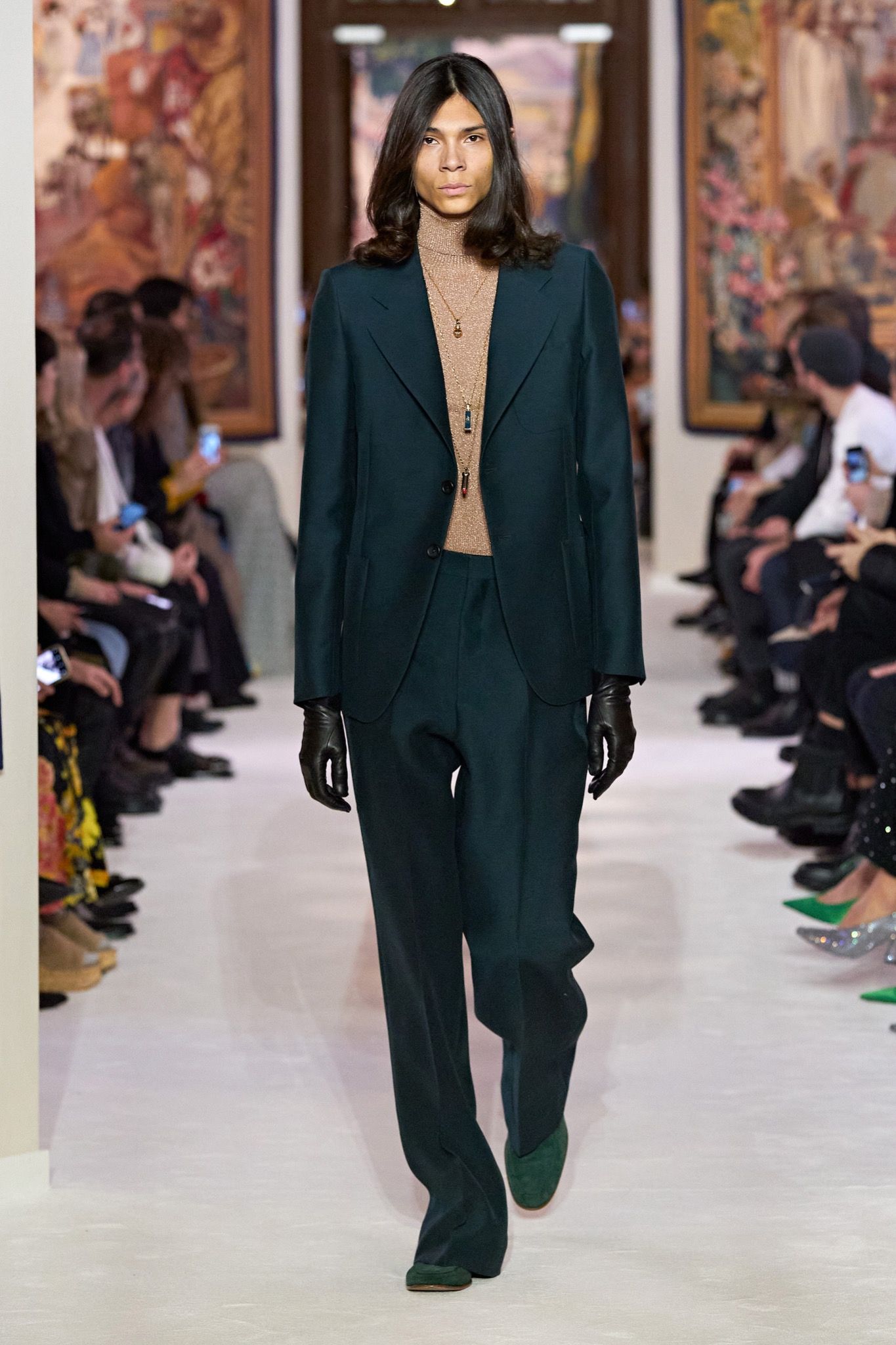
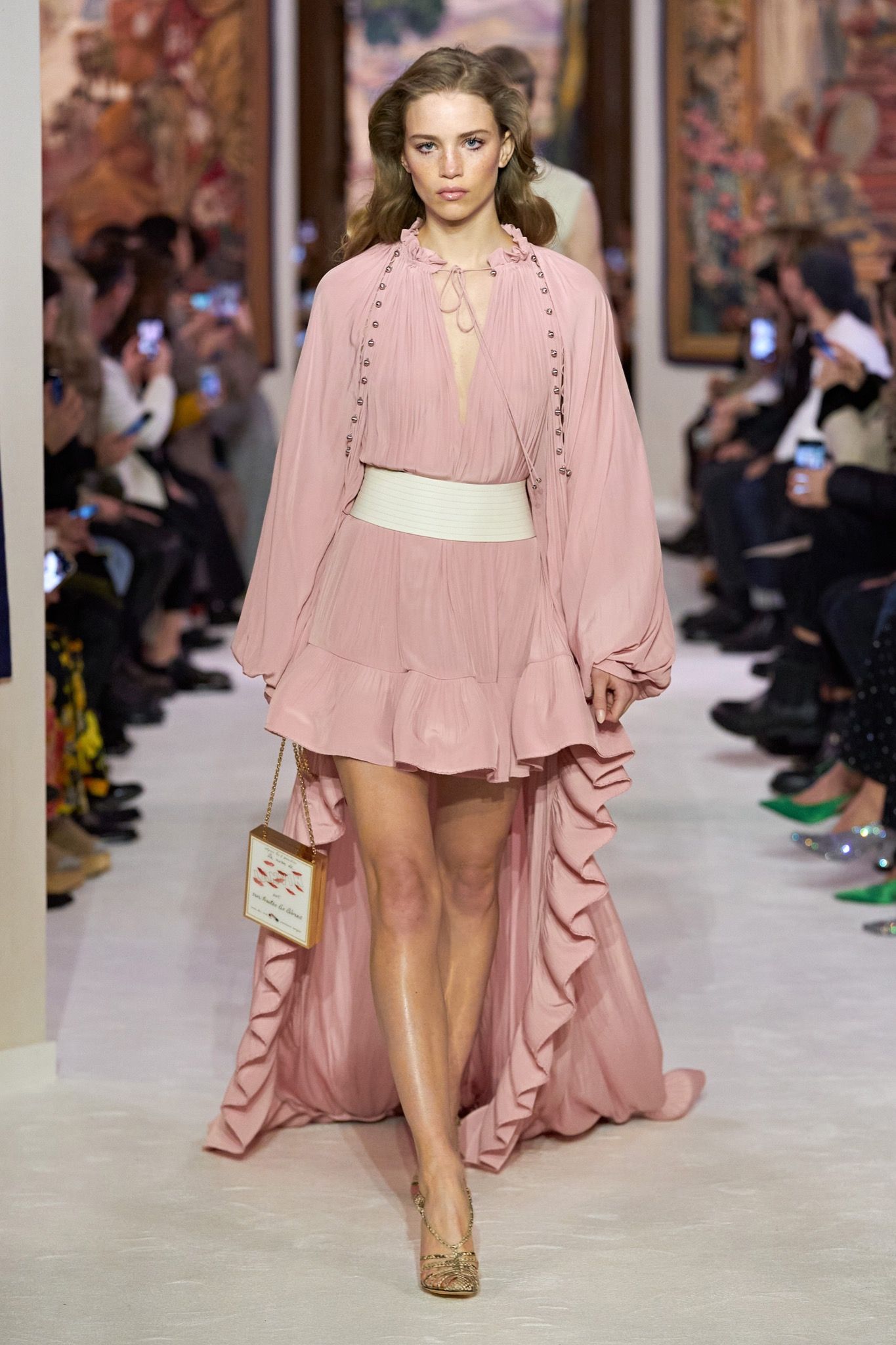
You’re in the lead role, to continue the metaphor, but another actor could headline the next production. This recasting relates to something I call “the heritage problem”: a new designer comes to an old house at a time when all the newspapers are saying it is struggling with sales or growth, and must pay deep homage to the legacy of the brand while being super fresh, and maybe ideally making an “it bag” or something.
That’s the best package, right? To me it was important to really take the angle of the Lanvin “Patrimoine,” the estate, as an ingredient to my narrative. I really do treat these things as ingredients, and I think the fashion that appeals to me is fashion that is made from a lot of different ones. I found myself creatively not being into finding the high tech fabrics and making the new volumes that nobody has seen before – I don’t see myself in that playground. I am playing with emotions – personal emotions, emotions I found in the DNA of the house, in the archive, in the story. I want to make them collide in a way that feels modern, new, refreshed. For me it’s how you create your character that is interesting, and how you build a new story from the past. The past grounds and witnesses the present for me.
There have been significant change-ups in fashion lately – demands for sustainability, Covid responsibility, diversity. How are you guys adapting to the latest discourse?
As a comedian my uncle talked a lot about diversity – sexual diversity, social diversity, racial diversity. You need different origins to incarnate your characters. When you try to just express it, it looks opportunistic or doesn’t feel true, because diversity is not a statement. It’s something you have in you. It’s the same with sustainability – we are taking some actions, but it’s a behavior, something you do in-house, not in a press release. When it comes to being able to adapt production and supply chain models and anticipate changes, it helps to be small and agile – and to be a proper luxury house. I recall my grand-grandmother, who I knew, would say that she was “too poor to buy cheap.” It’s not possible to see the world like that all the time, or to tell people that your 4000 Euro coat is “sustainable.” But the obsolescence of the product is something we can address, without it having to be about starting to make things from 100% recycled materials or changing everything you do. That’s like saying you want to plant 2000 trees somewhere but then shipping them there by truck, by plane. It’s a lot of communication, all to wash your hands. We’re not a house that will say, “bam, we are 100% zero carbon footprint” any time soon. We keep it tight and accountable.
Speaking of accessibility, I see you’re wearing a Lacoste polo shirt.
Yeah! Lacoste: it’s an obsession of all the teenagers, especially in Marseille, where it’s sort of a thug brand. Here in Paris it’s more bourgeois. I think anything you wear tells something about you, and for me this polo is telling some people that I still am this Marseille guy, and others that I can be, say, a bit more generic. I’m actually quite a dressed-up person, though I’ve calmed down a bit lately – honestly, it’s a lot of work every morning to find an exciting look, to be edgy without being “off.” I’m not really the navy jumper Stan Smith guy, but it depends. Today I said, “Okay, I will just put on the polo and it will be fine.” But next time you see me I might be in total look Comme des Garçons.
This year not only changed what we wear, but also how we produce, market, and present fashion. How are you navigating that shift in how you work and present?
I think it’s important right now to be agile, and to not be disappointed with what you can or can’t do. You have to look at different scenarios and run with them – not so far that you get stuck, but far enough to be able to say, that’s the scenario, that’s the most clever and the most relevant thing to do.
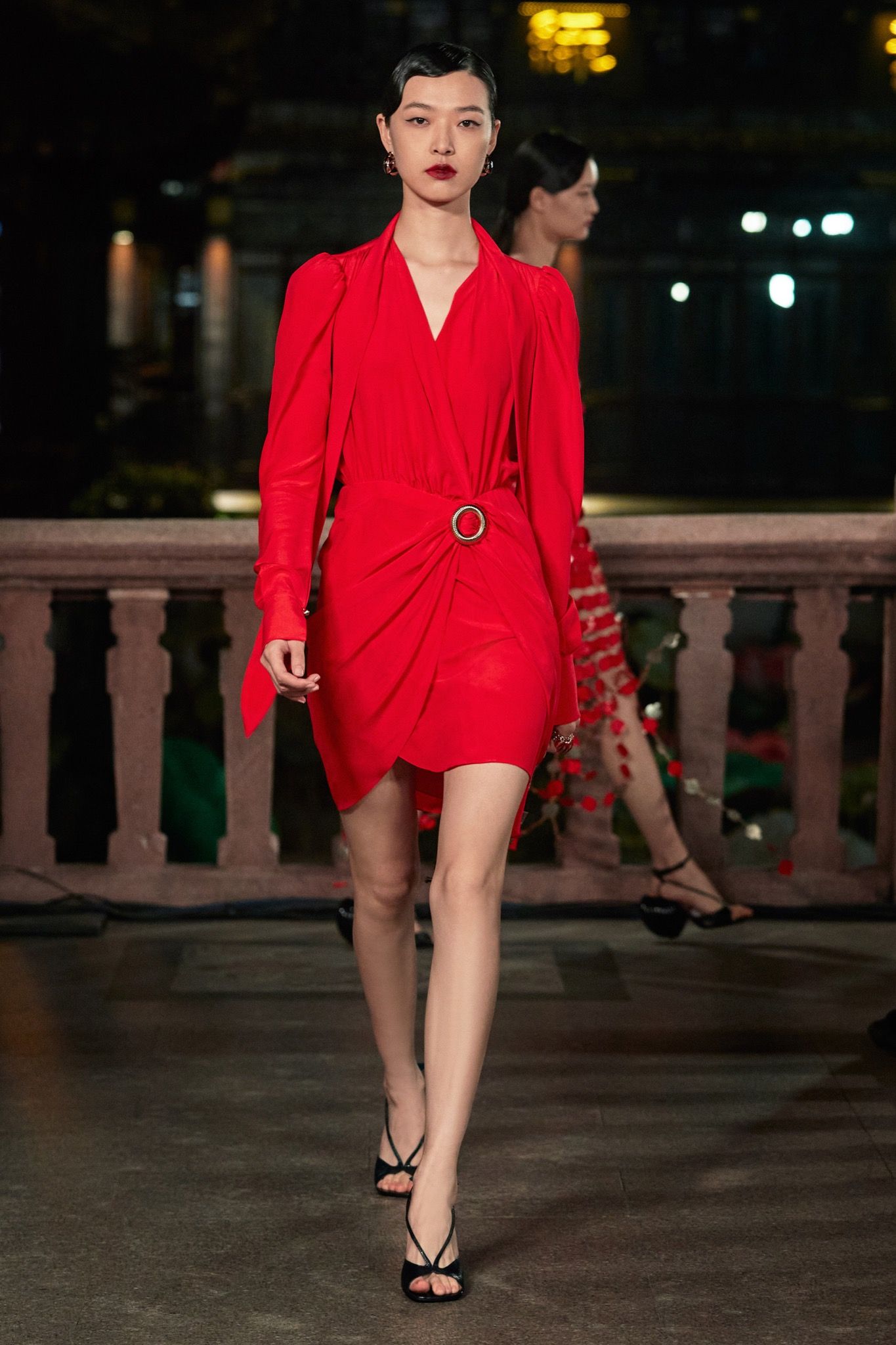
Credits
- Interview: Victoria Camblin
